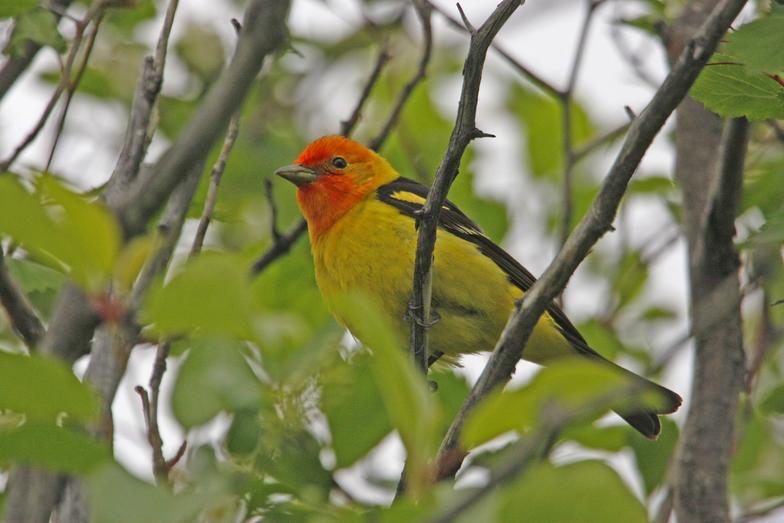saveourplanetearth.com
Call us: (775) 831-1331
Western Tanager and Audubon's Warbler
Lake Tahoe is home to a marvelous collection of flora and fauna but how many of us know what we are actually seeing? When I first started putting out bird feeders years ago, I remember saying to myself, “Look at all those birds!” Before long I realized that there were actually several different species of bird dining at my bird feeders and I could not name them.
Out came the binoculars and the bird book and I was hooked. Since then, I’ve learned to identify several birds both by sight and by listening to the songs and calls. This past month I had the good fortune to spot two birds that I’ve never seen before and these I will share with you today.
The Western Tanager is a black and yellow bird with a red head, and sports white wing bars. This is the breeding male. The female Tanager is duller, mostly greenish-yellow with a grayish back and wings and less noticeable white wing bars. This bird is abundant around Lake Tahoe but surprisingly hard to spot, given his bright colors. Probably the best indication that you’re in the presence of a Western Tanager is by knowing his song.
Western Tanagers eat fruits and insects and mainly forage in foliage, which is why you must look up to see them. They nest in large, mature trees, at points greater than 10 feet off the ground. Bring your binoculars! I heard him long before I saw him.
Another bird I heard for a month or so before I found him was the warbler. Around the beginning of June I began noticing a song that I did not recognize and I could not find the bird making the sound. I carry a digital recorder with me on my walks and record bird song that I hear, hoping that eventually I’ll be able to identify the bird. One day I was able to spot him! A distinct bird, he was gray and white with bright spots of yellow. My trusty bird book pointed me to the Audubon’s Warbler and I confirmed the identification by his song.
This pretty bird dwells in open coniferous forests in the summer, foraging for insects in the outer tree canopies. They build a cup nest in a tree and lay 4-5 eggs. In the winter, they often travel in large flocks, eating berries in warmer climates than Lake Tahoe. It would be truly magical to see a large flock of these stunning birds.
A good field guide is essential to being able to identify the birds that you see. I refer to “A Field Guide to Western Birds”, Roger Tory Peterson, sponsored by the National Audubon Society. There are also apps for your smart phone. Find the link to this app: “Audubon Birds: A Field Guide to North American Birds” on natureshare.com.
You can post your own sightings on natureshare.com, a site which isn’t limited to birds, but where you can find trees, insects, fish, butterflies, flowers and more. Share your love of nature with many other nature enthusiasts and reap the benefits of the combined expertise of people from all over the country.
Another indispensable tool is a small digital recorder I carry with me in a little pouch whenever I’m outside. Leaving home without it is a sure way to hear that song you’ve never heard before! The recorder I use is the Sony ICD-PX820. I chose this model because I can transfer my recordings to the computer, making sharing with others much easier. It’s not much larger than a pack of gum and costs less than $80.
Hopefully I’ve succeeded in inspiring the sleuth in you and fueled a desire to know more so grab your binoculars and let’s get birding!
Western Tanager
Audubon's Warbler (Yellow-rumped Warbler)




